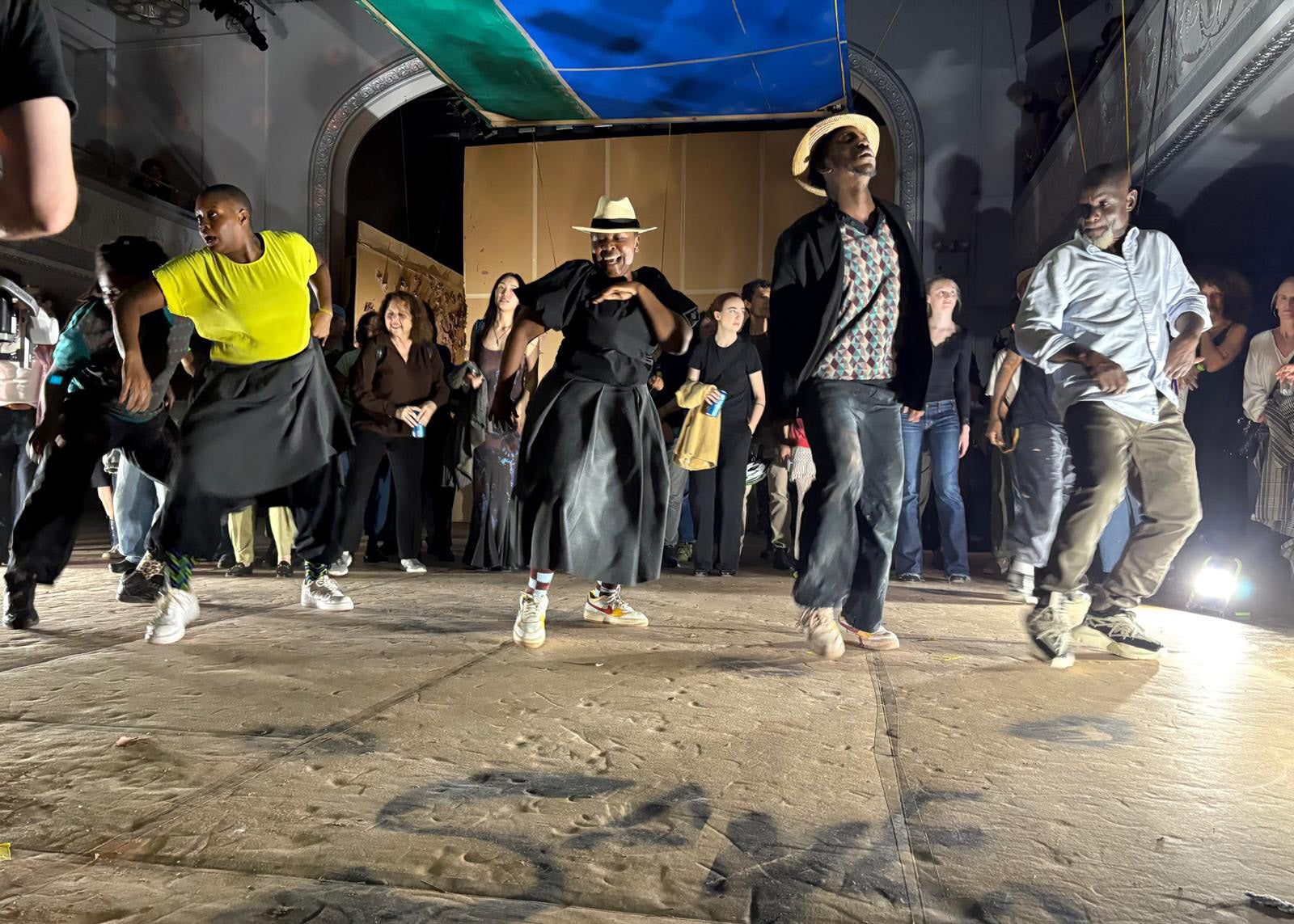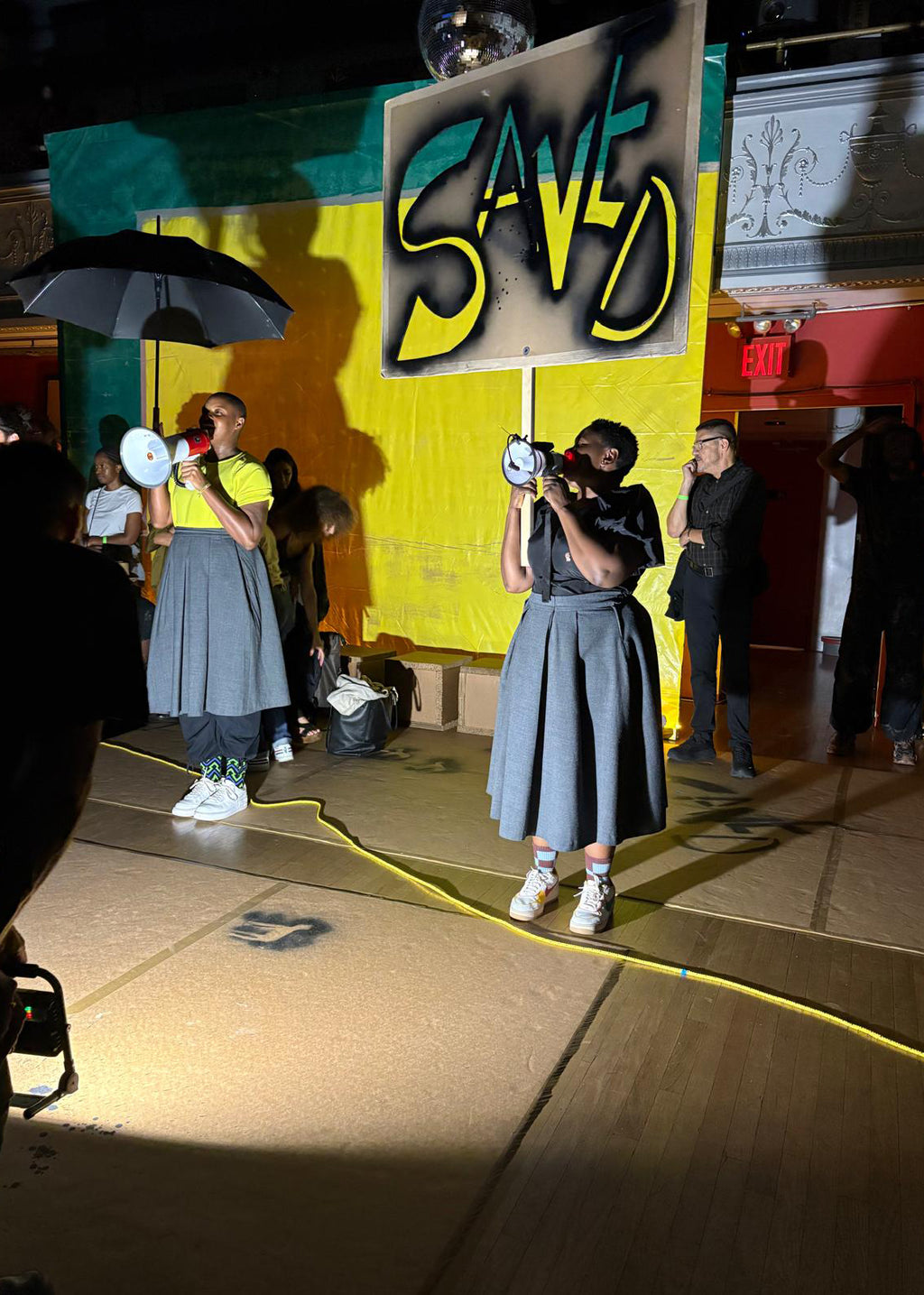Critic's Picks 2025
Throughout the year, our critics attend hundreds of dance performances, whether onsite, outdoors, or on the proscenium stage, around the world.
Continua a leggere
World-class review of ballet and dance.
I walk into Roulette, a rough-around-the-edges world music venue, a couple of blocks from the Brooklyn Academy of Music (BAM). I am attending “Dambudzo,” presented as part of BAM’s Next Wave Festival, brought to the neighborhood by the bold imagination and creative enterprise of Zimbabwe performing artist Nora Chipaumire. I know this will be a different kind of performance—there are no seats. The music hall, stripped bare of all furnishings except for a few blue plastic tarps strung up overhead and a suspended revolving strobe ball, is transformed into a shabini—a makeshift speakeasy in Southern Africa—where music, bodies, and revolutionary ideas collide. We are invited into the space as participants in a conjuring of Chipaumire’s experience of her home country, Zimbabwe, with its political complexity involving the struggle for independence followed by the struggle for a just self-rule with integrity.
Performance
Place
Words



“Uncommonly intelligent, substantial coverage.”
Your weekly source for world-class dance reviews, interviews, articles, and more.
Already a paid subscriber? Login

Throughout the year, our critics attend hundreds of dance performances, whether onsite, outdoors, or on the proscenium stage, around the world.
Continua a leggereOn December 11th, the Alvin Ailey American Dance Theater presented two premieres and two dances that had premiered just a week prior.
Continua a leggereThe “Contrastes” evening is one of the Paris Opéra Ballet’s increasingly frequent ventures into non-classical choreographic territory.
Continua a leggereI’m in the audience of the Pit to watch Kaori Ito’s solo performance, “Robot, l'amour éternel.” It’s in the blackbox performing space at the New National Theatre Tokyo, intimate and close. The stage is an open, raised platform, gauzy white fabric covering the floor.
Continua a leggere
comments